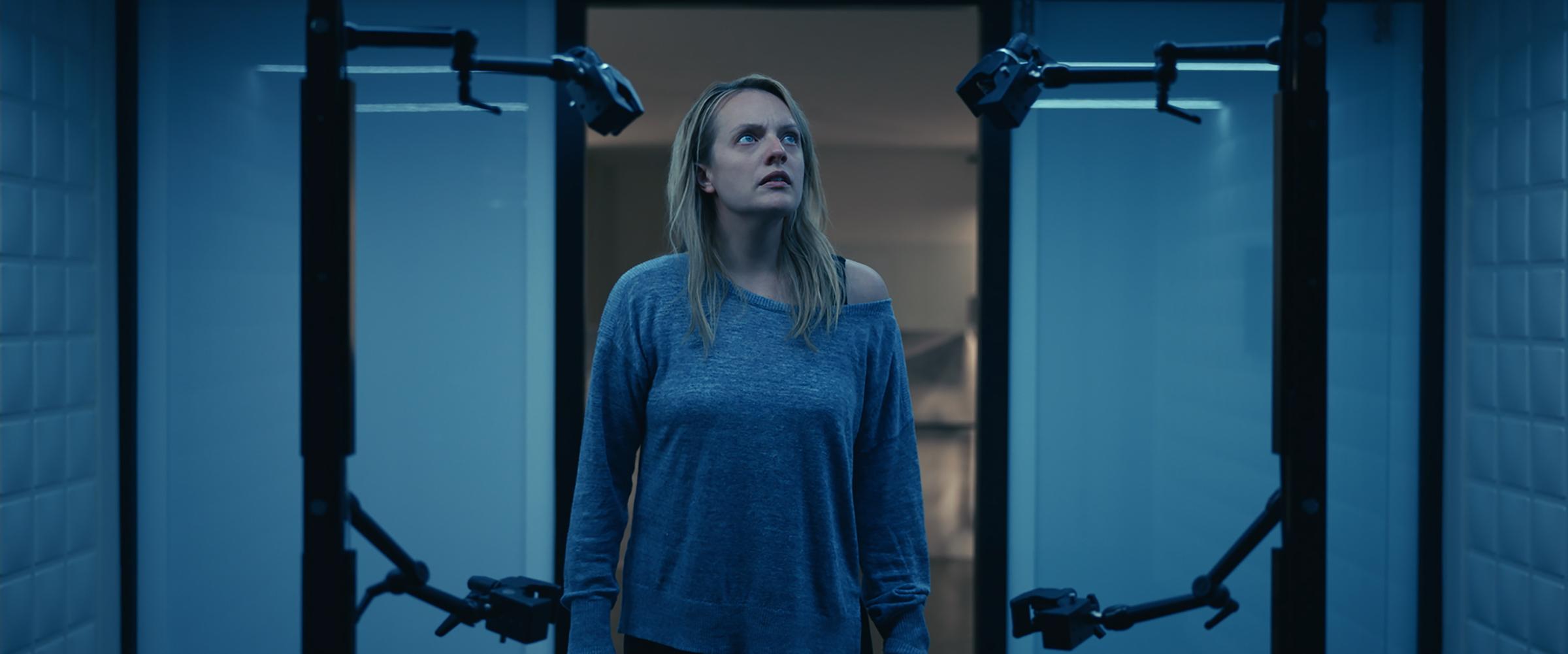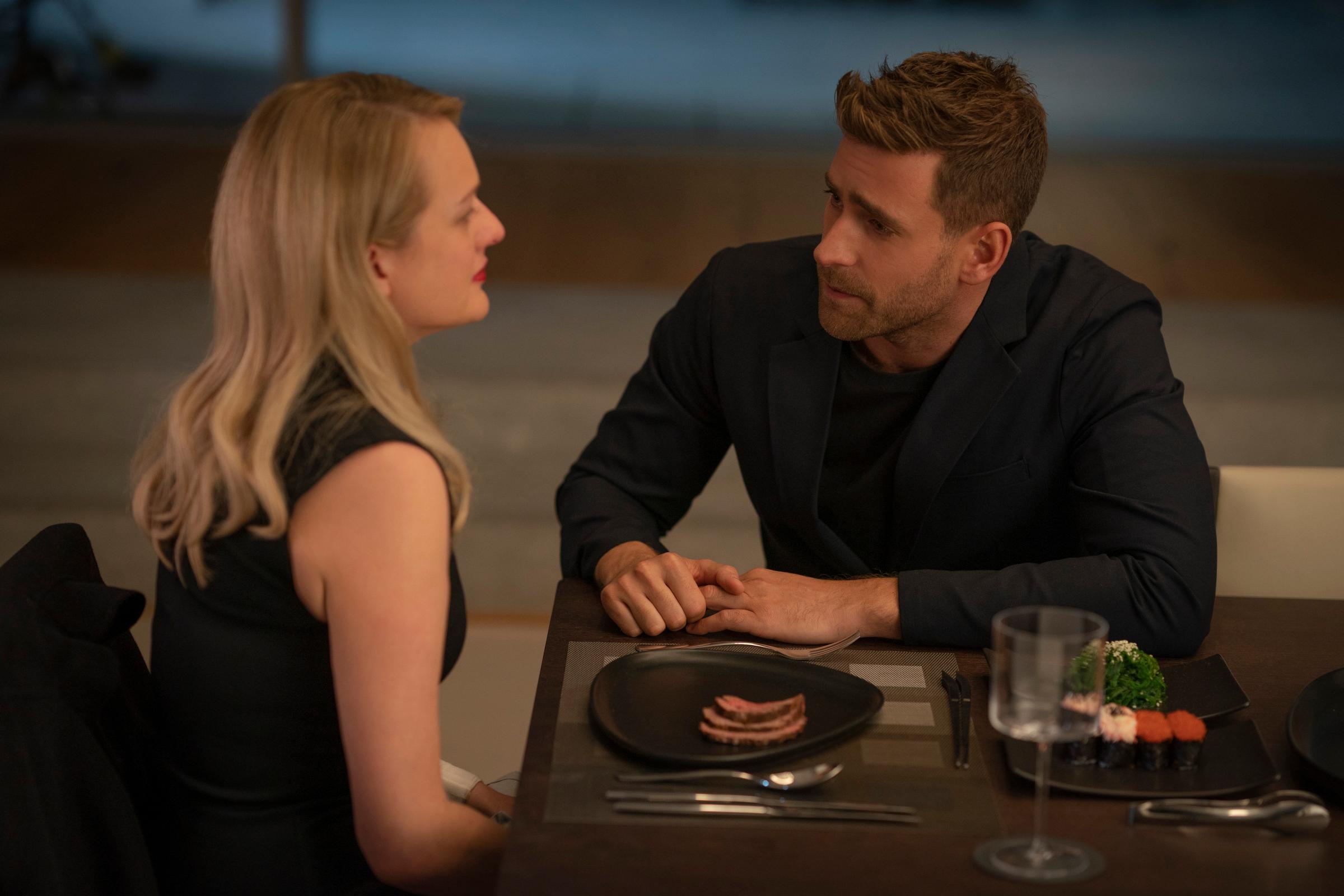Warning: This post contains spoilers for the movie The Invisible Man.
Like the 1897 H.G. Wells novel that it’s loosely based on, The Invisible Man movie centers largely, as its name suggests, on a man who discovers how to make himself invisible. But in many ways, the modern reimagining of the sci-fi thriller from writer-director Leigh Whannell (Insidious: Chapter 3, Upgrade) tells an entirely new story.
The Invisible Man, out Feb. 28, stars Elisabeth Moss as Cecilia Kass, a woman who begins to suspect that her abusive tech mogul ex, Adrian Griffin (Oliver Jackson-Cohen), didn’t commit suicide like she’s been told, but instead found a way to become invisible before faking his own death in order to continue to torment her. It’s a horror movie at its core but also, to some extent, a meditation on the insidious dynamics of domestic abuse and victim-blaming.
That’s a pretty far cry from the premise of Wells’ original tale, which recounts the downfall of an optics scientist who turns himself invisible and then, despite his best efforts, can’t figure out how to reverse the experiment. His desperation over the situation and the effects of the procedure itself lead him to commit a series of crimes, including murder, and ultimately drive him to the brink of insanity.

Universal’s 1933 movie adaptation of the book, directed by James Whale, stays pretty true to that narrative, with the addition of a few new characters, like Flora Cranley (Gloria Stuart), Griffin’s fiancée, and a bit more of a sympathetic lead. In an essay titled “Realist of the Fantastic: H.G. Wells about/in/on the Movies” that was included in the 2009 collection The Science of Fiction and the Fiction of Science, author Frank McConnell describes the 1933 film as a “nearly perfect translation of the spirit of the tale.”

In the long run, the original movie’s most lasting impact on pop culture has been the disguise that Griffin dons to appear visible — white bandages wrapped around his head, a fake nose, dark sunglasses or goggles, and a pork-pie hat — which has become a Halloween classic. If you saw 2019’s Marriage Story, just picture the costume Adam Driver’s Charlie wears to take his son trick-or-treating.
Whannell, on the other hand, opts to make Adrian’s ability to become invisible dependent on a suit that he can take off at any time. His invisibility is a weapon he wields rather than an irreversible condition that comes to consume him. In Adrian’s case, his invisibility is a result of his violent nature rather than the other way around.
Let’s dive deeper into a few of the ways that the new Invisible Man movie updates Wells’ original horror story.
The goal of the Invisible Man

Although the opening scene of the new movie reveals that Adrian has already invented the machine that produces his invisibility suits by the time Cecilia escapes their life together, getting revenge on her is seemingly what inspires him to start using one of them.
In Wells’ story, although Griffin certainly isn’t a good person to begin with, he is only driven to violence after he turns himself invisible simply to see if he has figured out how to do it. Adrian, on the other hand, is violent and unstable long before he ever starts experimenting with invisibility, judging by what we learn about him in the movie.
“Though the power of invisibility is usually rendered in these stories as a curse of sorts that drives men to madness, here it’s deployed as an out-and-out weapon: a way for an ex-boyfriend to physically and emotionally torture Cecilia as she tries to build a new life after leaving him,” David Sims writes for the Atlantic.
There’s also the fact that the only goal that Adrian hopes to accomplish with his invisibility is terrorizing Cecilia to the point where she’s forced to come back to him and live her life under his control. Even when Griffin starts posturing about using his invisibility to instigate a “reign of terror” in the book, his plan isn’t focused on torturing one person in particular — and definitely not a woman with whom he has been in a relationship.
Simply put, Adrian’s actions are of a much more personal and menacing nature than Griffin’s.
How others react to being told about the Invisible Man

In the book, Griffin’s existence is never in question. He even wears a disguise in order to appear visible to the people around him. And once he’s exposed as invisible, others who are told about his state of being seem to have no trouble believing that what they’re hearing is true. On several occasions, either the police, the community or both come to the aid of those who Griffin is after.
For Cecilia, convincing even those closest to her, like her sister Emily (Harriet Dyer), longtime friend James (Aldis Hodge) and James’ teenage daughter Sydney (Storm Reid), that she’s telling the truth about Adrian is a near-impossible task. And not only do they not believe her, they also think that she’s guilty of the crimes he’s committing. It takes security footage of an invisible force killing a slew of hospital guards as well as James and Sydney themselves being attacked to clear Cecilia’s name of wrongdoing.
“Everywhere she goes—and especially when she’s at home at night—she feels Adrian’s eyes on her,” writes TIME’s film critic Stephanie Zacharek of Moss’ Cecilia. “His presence is like a menacing vapor. We feel it too, but still, we doubt her.”
In an interview with Buzzfeed News, Whannell spoke about how the movie came to be a commentary on the importance of believing women when they share their experiences.
“I didn’t go into this film thinking, ‘How do I wrap this iconic character around a story about gaslighting?’” he said. “It was during the writing of that first draft that I felt the movie drifting in this direction of gaslighting, domestic abuse, and women not being believed or feeling like there’s an unseen threat. It felt like it really fit his character naturally.”
How the Invisible Man is defeated

After sharing his invisibility origin story with a former medical schoolmate and threatening to kill him when he doesn’t go along with his plan, in the book, Griffin is set upon by an angry mob of townspeople determined to put a stop to his crimes. He is brutally beaten and killed, and in death, becomes visible again.
In Whannell’s version of The Invisible Man, Cecilia gets no such help from others. Determined to ensure that Adrian will never be able to torment her again after he successfully frames his brother Tom (Michael Dorman) for his invisible crimes, she returns to his home to try to get him to confess on tape. But she quickly realizes that he not only won’t admit to what he’s done, he also has no intention of letting her go.
She then takes matters into her own hands by retrieving an invisibility suit that she stashed in the house earlier and slitting his throat while wearing it, making it look like he used his own hand to do it and killed himself. It’s an ending that plays as a revenge fantasy and one that Whannell told Buzzfeed News he felt satisfactorily resolved Cecilia’s character arc.
“I’ve dragged the protagonist through the mud and at the end I want to give some catharsis,” Whannell said. “I wanted the character to feel free.”
So free, in fact, that she might find more reasons to use the suit she’s lifted from Adrian’s mansion and stowed in her tote bag? Between solid box office projections and Hollywood’s love of a sequel, it wouldn’t be a shock if the century-plus-old Invisible Man franchise gives way to The Invisible Woman.
More Must-Reads From TIME
- The 100 Most Influential People of 2024
- Coco Gauff Is Playing for Herself Now
- Scenes From Pro-Palestinian Encampments Across U.S. Universities
- 6 Compliments That Land Every Time
- If You're Dating Right Now , You're Brave: Column
- The AI That Could Heal a Divided Internet
- Fallout Is a Brilliant Model for the Future of Video Game Adaptations
- Want Weekly Recs on What to Watch, Read, and More? Sign Up for Worth Your Time
Write to Megan McCluskey at megan.mccluskey@time.com